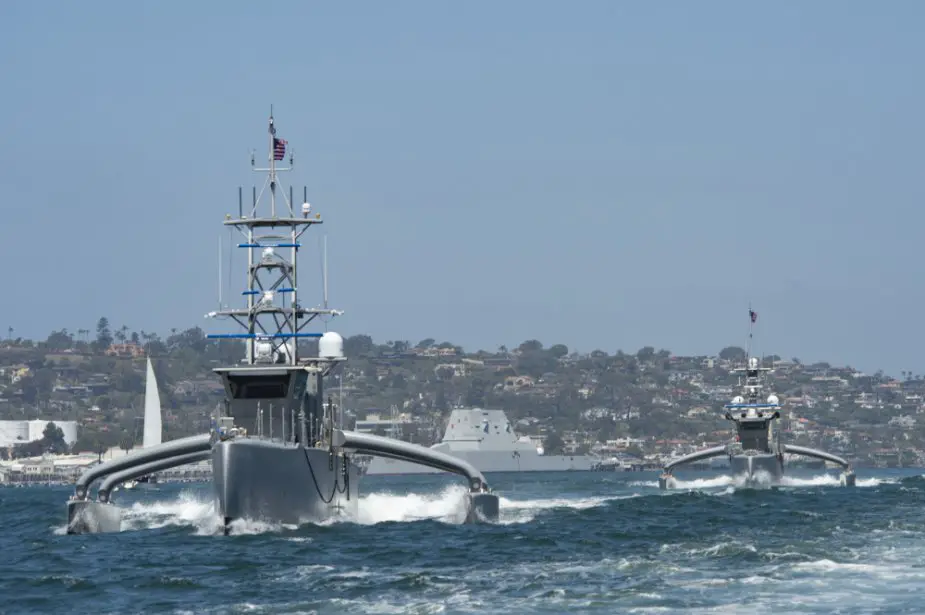Breaking news
US NAVY to launch Inaugural Unmanned Battle Problem 21.
According to information published U.S. Pacific Fleet on April 20, 2021, the Navy begins its inaugural multi-domain manned and unmanned capabilities exercise. The exercise will feature unmanned capabilities "Above the Sea, On the Sea and Below the Sea."
Follow Navy Recognition on Google News at this link
 The medium displacement unmanned surface vessels Seahawk, front, and Sea Hunter launch for the U.S. Pacific Fleet’s Unmanned Systems Integrated Battle Problem 21 (Picture source: U.S. Department of Defense)
The medium displacement unmanned surface vessels Seahawk, front, and Sea Hunter launch for the U.S. Pacific Fleet’s Unmanned Systems Integrated Battle Problem 21 (Picture source: U.S. Department of Defense)
Led by U.S. Pacific Fleet and executed by U.S. 3rd Fleet, Unmanned Integrated Battle Problem 21 will generate warfighting advantages by integrating multi-domain manned and unmanned capabilities into the most challenging operational scenarios.
The exercise will feature operational, unmanned systems such as the MQ-9 Sea Guardian Unmanned Aerial Vehicle, the Medium Displacement Unmanned Surface Vessels Sea Hunter and Sea Hawk, and small and medium Unmanned Undersea Vehicles with modular payloads.
Unmanned systems alongside the traditional, manned naval force will give the U.S. Navy the advantage needed to fight, win and deter potential aggressors. This exercise will directly inform warfighters, warfare centers and developers to further incorporate unmanned capabilities in day-to-day Fleet operations and battle plans.
U.S. 3rd Fleet leads naval forces in the Indo-Pacific and provides the realistic, relevant training necessary to flawlessly execute our Navy's timeless roles of sea control and power projection. U.S. 3rd Fleet works in close coordination with other numbered Fleets to provide commanders with capable, ready assets to deploy forward and win in day-to-day competition, in crisis, and in conflict.
Sea Hunter is an autonomous unmanned surface vehicle (USV) launched in 2016 as part of the DARPA Anti-Submarine Warfare Continuous Trail Unmanned Vessel (ACTUV) program.
The initially unarmed prototype, built at a cost of twenty million dollars, is a 132-foot (40 meter)-long trimaran (a central hull with two outriggers). She is an unmanned self-piloting craft with twin screws, powered by two diesel engines with a top speed of 27 knots (31 mph; 50 km/h).
Her weight is 135 tons, including 40 tons of fuel, adequate for a 70-day cruise. Cruising range is "transoceanic," 10,000 nautical miles (12,000 mi; 19,000 km) at 12 knots (14 mph; 22 km/h) fully fueled with 14,000 gallons of diesel.
Sea Hunter has a full load displacement of 145 tons and is intended to be operational through Sea State 5, waves up to 6.5 ft (2.0 m) high and winds up to 21 knots (24 mph; 39 km/h), and survivable through Sea State 7, seas up to 20 ft (6.1 m) high.
The trimaran hull provides increased stability without requiring a weighted keel, giving her a higher capacity for linear trajectories and better operations in shallow waters, though the greater width decreases maneuverability.



























